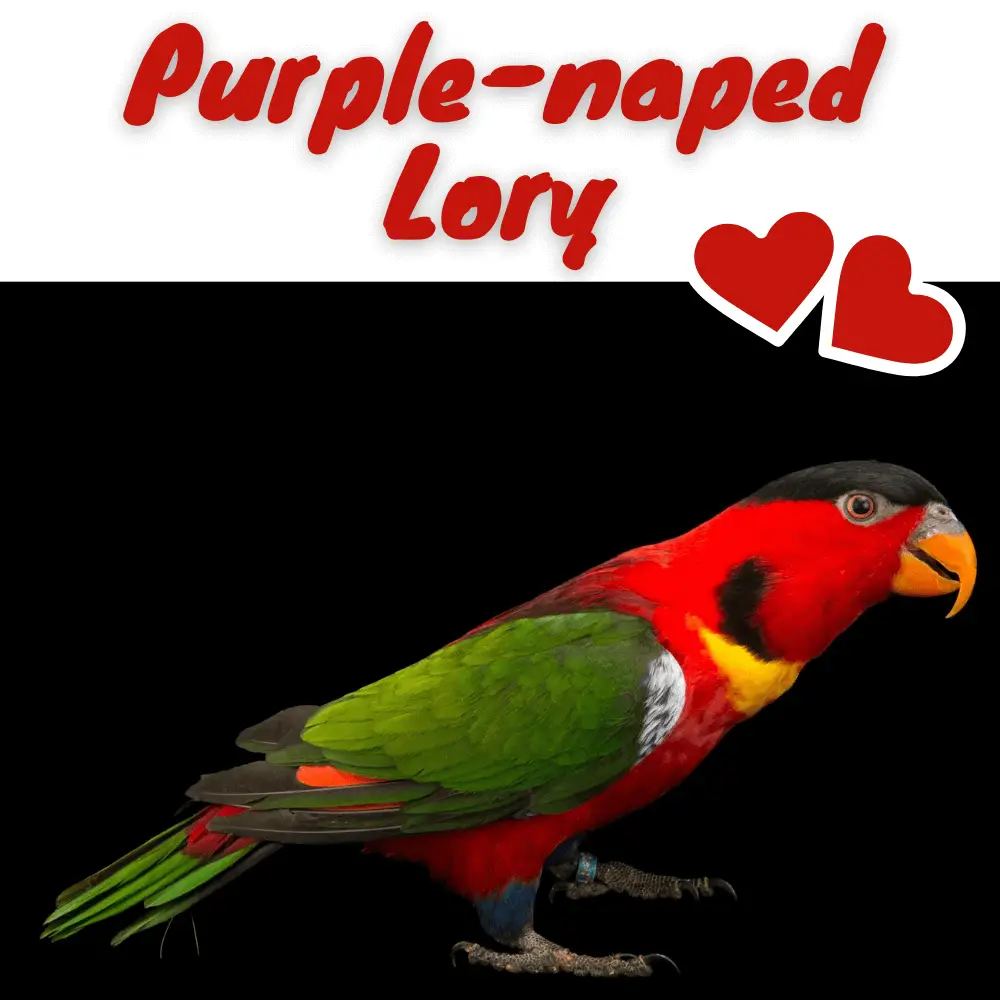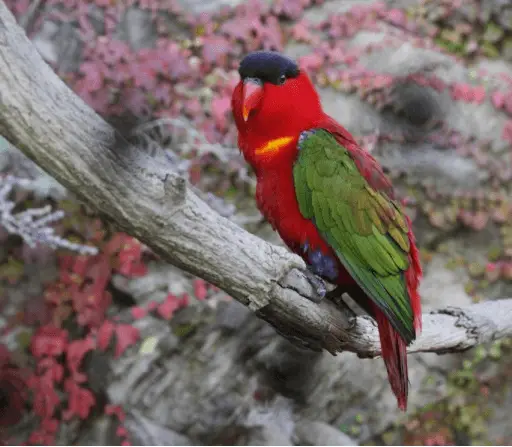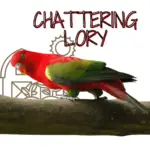
Purple-naped Lory 28 cm. Mainly red; bill orange; crown above a line through the eye to nape black, shading at the rear to violet; variable yellow band across the upper breast;
thighs purplish-blue; wings green with pale whitish blue at the bend; underwing-coverts blue with a broad yellow band across the underside of flight feathers; tail red-tipped brownish-red.
Immature has deeper violet on the nape, a broader yellow band on the breast, and a brownish bill.
Species name sometimes erroneously spelled domiciles but is a diminutive feminine noun. Forms a species group with L. Garrulus, L. lory, and L. hypoinochrous. Described from L. tibialis (Blue-thighed/Jamrach’s Lory) was probably based on an aberrant specimen of the present species. Monotypic.
Subspecies
An apparently feral population existed on Buru but is now extinct.

Distribution
S Moluccas on Seram; perhaps still persisting on Ambon.
Habitat
Hill forest, with a restricted altitudinal range from 400 m up to at least 1050 m; densities apparently highest in upper parts of this range, particularly above 800 m.

Diet and Foraging
Purple-naped Lory feeding acrobatically on pendant seeds of rattan and other plants. Generally observed in groups of just two and three birds. No further information is available.
Sounds and Vocal Behavior
Quite vocal. Voice quite distinctive, with many raptor-like drawn-out whistles and screeches, often modulated and increasing and decreasing in pitch. Also a rapid series of squeaky notes, and several shorter notes such as “kee” or “wir”.
SOURCE: Jan Dolphijn
Breeding
No information from wild. In captivity: two eggs, size 30·9–31·6 mm × 24·5–25·8 mm; incubation c. 24 days; Purple-naped Lory nestling period c. 3 months.
Purple-naped Lory
SOURCE:obirds
Conservation Status
ENDANGERED. CITES II. Previously considered Vulnerable. A BirdLife “restricted-range” species. Apparently a naturally low-density bird, uncommon to rare on Seram, with no recent reports from Ambon or Buru.
Fair numbers trapped and kept by local villagers at Manuela National Park, Seram, and the most recent visit to the island (in 2012) indicated that trapping continues.




















